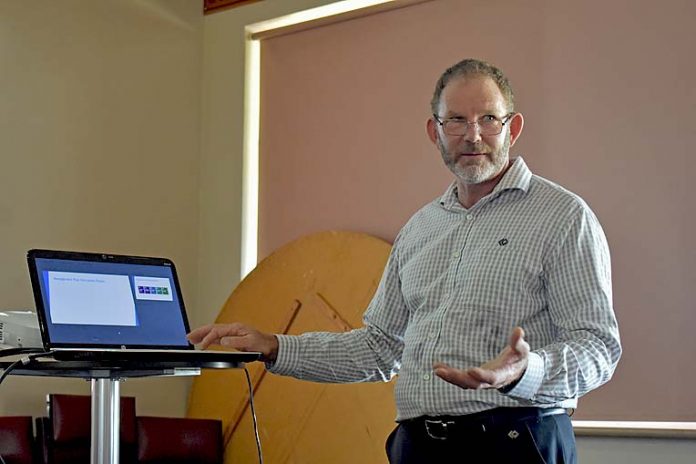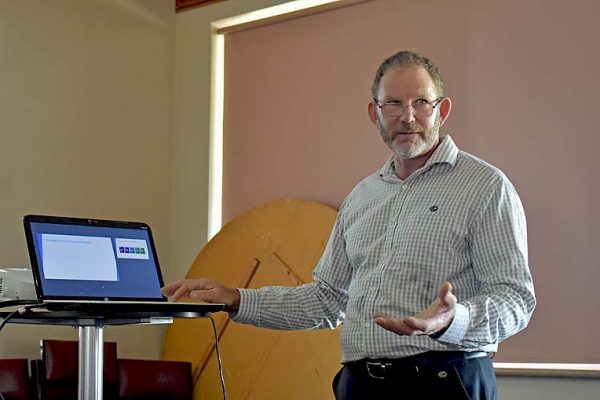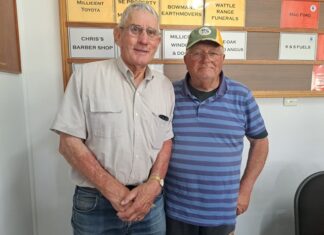

THE distinctive loud calls of hundreds of noisy corellas are causing disquiet among the Tantanoola community, with the birds wreaking havoc to trees, television aerials and waking residents up in the early hours of the morning.
Wattle Range Council met with around 10 residents at a public consult last week to discuss the nuisance birds after a petition was tabled at their January meeting.
In order to gauge the extent of the problem and develop an integrated corella management plan, council sought feedback from the Tantanoola community.
Bunnie Chipman – who was part of the small gathering – said the birds had been an issue ever since she moved to the town four years ago.
“The noise is the biggest problem – if I lost my hearing tomorrow they would not bother me,” she said.
“Also you can walk through the park and there is just so much rubbish on the ground they have bitten off trees.
“I keep looking up at the trees and see they have shredded all the branches, leaves and everything off – it is destructive, but my main complaint with them is the noise.
“I could walk across the park and startle them and they can fly really close to me – around half a dozen of them – and the screech is just loud in your ears.”
Ms Chipman said previously the issue had been resolved by the sound of a shotgun, however after South Australian Police intervened the method of scaring off the corellas was shut down following a noise complaint.
“My neighbour would ring me up and say I’m about to let off a shot,” she said.
“He would go out with a shotgun and let off a bang, the sound would make me jump a mile away it was that loud, but it worked,” Ms Chipman said.
“It had to be consistent.
“He would not shoot them, it was just a scare tactic, however one person complained about the noise and it was stopped.
“This year the birds have come back 10 times worse.
“I hear them, but they do not actually wake me up in the morning, I’m usually up at 6am and they are going berserk.”
Meanwhile, Tantanoola resident of 35 years Michael Cavanagh said he had been affected not only by the noise, but also the bird’s destructive behaviour.
“They have destroyed trees and killed fully grown trees on my property,” he said.
“I have had an aerial, which has snapped under the weight of the birds.
“Then there is the noise … they wake me up at 5am and then they start back up again between 6pm and 7pm.
“I have lived in Tantanoola for 35 years and they have not always been an issue.
“They have only been an issue in the last eight years, before you would only see one or two of them and now you see large amounts.”
Mr Cavanagh said the birds had only “hit the town big” at certain times and he believed it depended on what was happening “further away”.
“This year is not as bad as what we had around three years ago – it was out of control,” he said.
“However, we were allowed a cull, which absolutely worked.
“I live two or three doors down from the Post Office in Tantanoola, so I am in town and have one row of trees and there is a park alongside.
“They come in and absolutely roost there.
“They stay all night and then at about 6am they are off again.
“I’m for culling, but not for mass execution.”
The community consult provided council with an idea about the bird problem, where it is located, the damage it causes and how often it is a problem.
Short, medium and long term strategies were also discussed to control the situation including culling, gas guns, laser pointers, drones and restricting access to water supplies.
Council’s assessment manger John Best said data would be collected from the consultation and an analysis of the situation would be completed.
“We are getting a better understanding about what the problem is,” he said.
“We will get that data crunching done and we will look at engaging with the people that want to put up their hand and say hey yeah I’m willing to help develop a plan run it forward.”





